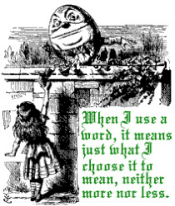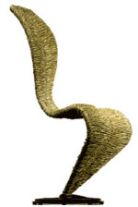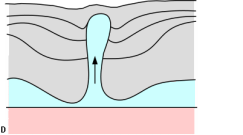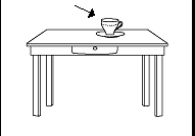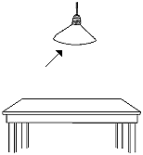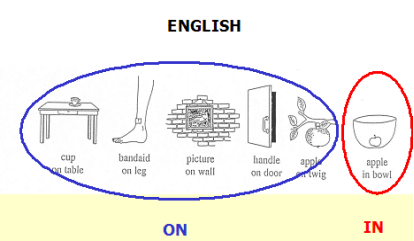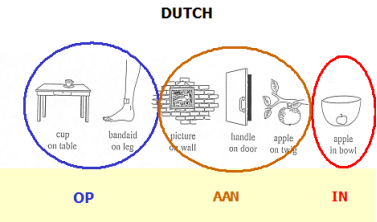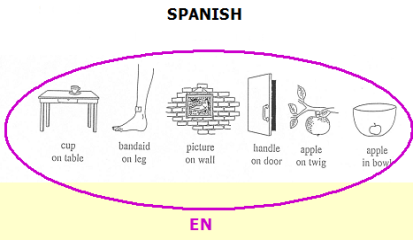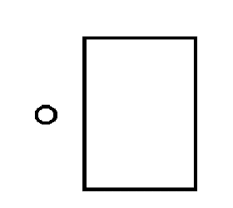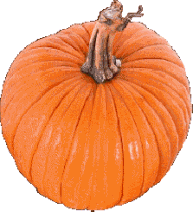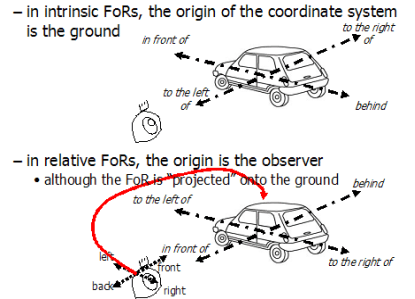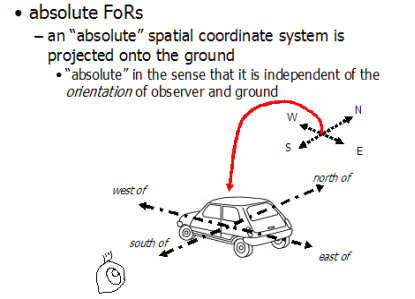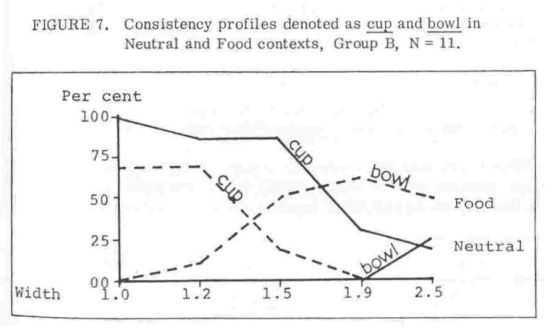Semantics - The Study of Word and Sentence Meaning
|
|
‘When I use a word,’ Humpty Dumpty said, in a rather
scornful tone, ‘it means just what I choose it to mean,
neither more nor less.’
‘The question is,’ said Alice, ‘whether you can make words
mean so many different things.’
‘The question is,’ said Humpty Dumpty, ‘which is to be
master – that’s all.’
|
Meaning is at once the most obvious and most mysterious feature of human language. We can’t
claim to know a language without knowing the meanings of words and yet more than 3,000 years
of speculation by philosophers and linguists has failed to provide a theory of meaning. In this
section we investigate whether Alice or Humpty Dumpty has a better theory of meaning. We
devise several semantic tests for different theories of meaning. We end with some examples of a
linguistic approach to the study of meaning.
Alice v. Humpty
What are the main features of Alice’s theory of word meaning?
What are the main features of Humpty’s theory of word meaning?
Reference Theories of Word Meaning
Alice’s main concern is with the relation between meaning and reference. Ask anyone about the
meaning of a common noun such as chair or carburetor and chances are they will point to an
instance of such an object if it is handy. This type of ostensive definition satisfies our intuitions
about what words mean by pointing to something the word denotes, and has prominent advocates
such as John Stuart Mill. Does reference provide a valid theory of meaning?
Reference theories of meaning define the meaning of words or phrases in terms of the things (or
actions, qualities, relations, etc.) that the word or phrase denotes. If we ask someone for a cup
and they hand us a sponge, we are apt to think they did not understand the word cup. More
precisely, we can equate the meaning of a noun with the set of things that are that object.
CUP = the set of things that are cups
SPONGE = the set of things that are sponges
Verbs, other words and even sentences can be defined in terms of their reference sets as well.
RUN = the set of things that run
BARK = the set of things that bark
JOHN RUNS = true or false
MARY BARKS = true or false
Reference theories of meaning define meaning in terms of the semantic extension of a word or
phrase. The semantic extension of a word or phrase is the set of things, actions, etc. that define
the reference or the word or phrase. The semantic extension of a declarative sentence is its truth
value.
Just to keep things straight, I will put a word in italics when I mention it and will use capital
letters to refer to the meaning of a word. So CUP stands for the meaning of the word cup. A cup
is the thing referred to by the English word cup.
Testing Reference Theories of Meaning
Problem 1: Words without a Semantic Extension
A reference theory of meaning accounts for our ability to point to the things that words denote,
but it has critical shortcomings. Not all words or phrases have a semantic extension in the real
world, e.g. Hobbit, witch, phlogiston. The meaning of verbs would change continuously as, for
example, some organisms stop running and others start running. We are investigating whether the
word meaning has a semantic extension. Sentences create other contexts in which words are used
in non-referential expressions.
No dog misses a treat.
Where did you find your cat?
How do such words and sentences invalidate reference as a theory of meaning?
Problem 2: Semantic Intension
The philosopher Gottlob Frege pointed out a critical flaw using the phrases morning star
(Phosphorus) and evening star (Hesperus). These phrases have the same referent, but different
meanings. Using them in a sentence makes this difference obvious.
The morning star is the evening star.
The morning star is the morning star.
The first of these sentences tells us something new, while the second sentence does not. A
reference theory of meaning does not predict this difference. Why not?
Frege distinguished between a word’s semantic extension (reference) and its semantic intension
(sense). The semantic extension of a word is the set of things the word denotes, while its
semantic intension is the concept or meaning of the word. The meaning of a word determines
the things it refers to, but it cannot be equated with its reference.
Problem 3: Opaque Contexts
Sentence meaning displays a similar distinction between extensional and intensional meanings.
George is the best student in linguistics.
I dreamed that George is the best student in linguistics.
The first sentence asserts that George is one and the same shining paragon of linguistics. In other
words, it asserts that George and the best student in linguistics have the same semantic extension.
If George is the best student in linguistics then the first sentence is true. Assuming the first
sentence is true, however, does not guarantee the truth of the second sentence. The truth of the
second sentence depends on what I dreamed and not on the truth of George being the best student
in linguistics. We can usually equate the semantic extension of a sentence with its truth value, but
we see that the truth of the embedded clause has no effect on the truth value of the second
sentence. Propositional attitude verbs (dream, believe, want) create opaque contexts where the
truth value of the embedded clause is unrelated to the truth of the whole sentence. We need
something more than the reference of the embedded clause to understand meaning in opaque
contexts.
Problem 4: Referential Change
The things that words refer to seem to be changing constantly. A good example of this change is
the name of a town, e.g., Lawrence. Lawrence has been continuously expanding since its
beginning. It was burnt to the ground once and rose from its ashes. Individual buildings in the
town are constantly changing shape and color. The entity denoted by the name Lawrence is not
the same from one day to the next. A strict interpretation of a reference theory of meaning would
predict that the meanings of most names is constantly changing.
The philosopher Hilary Putnam pointed to an interesting case of semantic change in scientific
theories. One of the major advances in physics occurred when Newton equated momentum with
the product of mass and velocity. We say that Newton defined momentum as mass times
velocity. This equation held true until Einstein predicted that it would break down for objects at
relativistic speeds. Einstein redefined momentum by adding a relativistic adjustment to Newton’s
original equation. Intuitively, we feel that Newton and Einstein were talking about the same
concept, but a strict referential theory of meaning would claim that they were talking about
different things.
Problem 5: Semantic Expertise
Putnam alleges that many people cannot pick out the referents for all the words they use. He
claims that he cannot tell the difference between beech trees and elms even though he has used
the words beech and elm for most of his life. A referential theory of meaning suggests that
anyone would know the difference if they knew the words beech and elm. How would you define
the difference between the meanings of the words walk, amble, shuffle, saunter, stroll, slouch,
slink, slip and mosey?
Assessment
We have identified five significant problems with reference theories of meaning. These problems
supply significant information about the nature of meaning and show that meaning is something
more than reference. The text contrasts reference with sense, but never defines what sense is.
One way to think of sense is as a mode of presentation or a small story. Two phrases with the
same reference such as Barack Obama and the 44th president of the United States provide
different presentations or stories about the same referent. In cases like Hesperus and Phosphorus,
we may not know that the perspectives have the same referent. In cases like unicorns and
phoenixes, we may have perspectives without real referents. In cases like elms and lychees, we
have perspectives with vague referents.
These problems provide tests that any theory of meaning should meet. Any theory of meaning
that depends on reference will have the same limitations. We investigate some other forms of
referential theories next to see if they can respond to the five problems we discussed.
Other Reference Theories of Meaning
To this point we have evaluated a simple reference theory that equates meaning with semantic
extensions in the real world. Other reference theories equate meaning with other types of
semantic extensions. The following sections discuss a few of these other reference theories.
1. Mental Images
If Frege is correct then meaning is something more than reference. The philosopher John Locke
proposed equating meaning with the pictures of objects in our mind. While this idea has a certain
appeal, it also suffers from a number of problems.
Problem 1: Internal Reference
If we use mental images of objects as the basis for meaning then we are equating meaning with
mental referents rather than external referents. To the extent that our mental images for morning
star are similar to evening star then we just have a mental image version of a referential theory of
meaning. To the extent that our mental images are different for these two concepts, we would
need to add a new component to the mental images to explain why these phrases have the same
referent.
Problem 2: Different Images
A mental image theory cannot insure that speakers of the same language carry the same mental
image for any given concept. To the extent that one speaker’s mental image of a grandmother is
different from that of another speaker, the theory cannot explain our ability to communicate via
language.
A mental image theory predicts the possibility that every speaker has their own private language.
The philosopher Wittgenstein pointed out that it would be impossible to prove that someone had
a private language to the extent that it was private.
2. Prototypes
Wittgenstein offered his own version of a mental image theory built around prototypes. The idea
is that we only require a family resemblance between objects to consider them the same.
Wittgenstein pointed out that words like game refer to many different types of contests which
lack any common features across their whole range of use. A game may involve multiple players
or just one. The players may play strictly for enjoyment or profit. We recognize what counts as a
game because it has one or more features of a game. Prototypical games have most of what we
think of as game features.
Problem 1: Prototype Reference
Prototype theories of meaning are based on reference to a prototype. Prototype theories encounter
all the problems that we discussed for reference theories. How would you apply Frege’s Morning
Star/Evening Star critique to a prototype theory of reference?
Problem 2: Non-prototypical Examples
Although many experiments suggest that we recognize prototypical members of a category faster
than we recognize non-prototypical members, and recall prototypical members faster as well, we
still include non-prototypical members in every semantic category. The set of dogs includes
Chihuahuas and Great Danes in addition to Labradors and retrievers. All prime numbers are
prime numbers even though 3 and 7 may be prototypical primes. Prototype theory does not
explain how we draw the boundaries between different concepts rather than just recognizing the
most typical members.
Problem 3: Prototypical Features
Prototype theories typically rely on a list of features that speakers use to define the prototype for
any concept. Prototypical features for a bird, for example, include a beak, wings, flight and
feathers. We recognize a prototypical bird to the extent that it has most of the prototypical
features. This process invites the question of how we recognize the prototypical features of birds.
They would be features that we observe on prototypical birds. We then have a circular definition
that relies on prototypical features to define the prototype, but also relies on the prototype to
define its prototypical features.
Problem 4: Combining Features
A theory of meaning has to predict how the meanings of individual words combine to produce
the meaning of a phrase. Prototype theories of meaning lack the ability to predict how to combine
the meanings of words. For example, prototypes for the word pet would include dogs and cats.
Prototypes for the word fish would include salmon and trout. But these prototypes do not predict
the prototype for the phrase pet fish.
3. Semantic Features
If mental images do not supply the critical distinctions necessary for meaning another possibility
would be that humans rely on a set of innate semantic features to construct meaning. The
philosopher, Jerry Fodor, maintains this Language of Thought is the only explanation of our
ability to communicate ideas. The innate semantic features would be akin to a table of atomic
elements. Once we define each semantic element, we will be able to explore how they combine
to produce meaning. Needless to say, the theory of innate semantic features also runs into
reference difficulties.
Problem 1: Feature Reference
Semantic Feature theories must explain how speakers fix the reference of each feature. Lyons
(1973) pointed out that semantic features never seem to provide enough power to explain word
meaning. A theory that tells us the meaning of mare has the feature ANIMAL won’t take us very
far if the theory doesn’t supply a meaning for ANIMAL. If the feature theory uses reference to fix
the meaning for ANIMAL, it is just another type of reference theory with an intermediate mental
vocabulary. We might assume, with Fodor, that ANIMAL refers to a mental concept or brain
state. Does this version of feature theory evade Frege’s problem?
Problem 2: Feature Arbitrariness
Semantic feature theories have been criticized for their arbitrary nature (Burling, American
Anthropologist 1964 ‘God’s truth or hocus pocus?’). Does the meaning of the word man contain
a semantic feature [+MALE] or the feature [-FEMALE]. Either feature would allow you to
distinguish the meanings of the words man and woman, but there is no reason to prefer [+MALE]
over [-FEMALE].
Mathematicians have devised various definitions for the concept NUMBER. Dedikine proposed
a ‘cut’ in the number line, while Russell & White proposed a definition using set theory. Both
definitions are equally valid, but we have no reason to prefer one over the other.
Usage Based Theories of Meaning
We investigated several types of reference theories of meaning of the sort Alice would approve
and found that they all face difficulties discussed by Frege, Putnum, Quine, Fodor and other
philosophers. The basic problem is that reference-based semantic theories do not account for
intensional meaning. Intensional meaning is based on the stories that we use to make sense of
words. As Humpty Dumpty claims, our stories give us mastery over word meanings.
Frege offered a Humpty Dumpty or usage theory of meaning as an alternative to reference
theories. A usage theory of meaning equates meaning with the ways that words are used.
Dictionaries commonly employ a usage approach in their definitions of word meaning. Linguists
and philosophers sneer at dictionary definitions, but they have yet to offer a viable alternative.
Linguists have much to learn from exploring the practical approach that lexicographers use to
construct definitions. We will explore some criticisms of dictionary definitions before looking at
how a usage based theory meets the tests we used for reference theories.
Problem 1: Dictionary Definitions Use Words in Definitions for Other Words
A common complaint about dictionary definitions is that you have to know the meanings of the
words the dictionary uses before you can understand the meaning of the word you are looking up.
The American Heritage College Dictionary provides the following definitions:
opossum
1. Any of various nocturnal, usually arboreal marsupials of the family Didelphidae, ... of the
Western Hemisphere, having a thick coat of hair, a long snout, and a long prehensile tail.
2. Any of several similar marsupials of Australia belonging to the family Phalangeridae.
diapir
An anticlinal fold in which a mobile core, such as gypsum, has pierced through the more brittle
overlaying rock.
The philosopher Willard Van Orman Quine proposed a dictionary type theory of meaning as a
basis for his thesis of semantic holism. Semantic holism assumes that the meaning of every
word depends on the meanings of other words, tying word meanings into a semantic net. The
more stories that we learn, the more we know about the meaning of each word. A change in our
understanding of a word will affect our understanding of the stories we tell. Quine’s semantic
theory reflects his view of science where a single discovery can radically transform our
understanding of everything.
A usage theory provides a dynamic theory of meaning. It recognizes that we do not know
everything (a state Putnam labels logical omniscience). New discoveries lead to changes in our
stories. We need to discover that Phosphoros and Hesperus refer to the same planet. A usage
theory explains why we can use words such as elm or beech the way other people use them
without being able to identify their exact referents. A usage based theory ties meaning to a
linguistic community rather than to the mind of individual speakers.
Problem 2: Dictionary Definitions Include Function Words
Dictionary definitions cannot avoid using common function words such as the, of or to in their
definitions. This practice seems to create a problem of accounting for our understanding of these
words. Function words actually provide strong evidence in support of usage theories since these
words lack obvious referents and differ considerably in use from language to language. Some
languages lack articles or prepositions altogether. Quine observed that the meaning of articles
like the depends on whether languages also have plural markers or noun classifiers.
Linguistic Semantics
It is possible to use linguistic methods to investigate semantics rather than philosophical
arguments. The primary method linguists can deploy is to describe the semantic distinctions
speakers use their words to make akin to the phonemic distinctions that speakers observe. The
main difficulty is to discover a language-neutral way to describe a semantic domain. The
meanings of English words are different from the meanings of words in other languages.
Berlin & Kay’s (1969) work Basic Color Terms provide a classic model of the linguistic
approach. The color domain seems easy to describe. The visible spectrum is contains an infinite
number of different wavelengths that languages typically divide into a more manageable finite
number of basic color terms. Linguists distinguish between basic color terms such as green and
red from nonbasic color words such as burnt umber and olive drab. Basic color words are known
by every speaker and can be easily identified. They are not restricted to certain domains (as are
the English words brunette and sorel), they are not included in the range of another term (as are
the English words lemon and scarlet), and their meaning cannot be derived from other basic
color terms (bluish).
Compare how the basic color terms of English, Shona and Bassa divide the basic color space:
English: red orange yellow green blue purple
Shona: cipswuka cicena citema cipswuka
Bassa: ziza hui
Berlin & Kay (1969 Basic Color Terms) discovered that although languages have different
numbers of basic color terms, they add terms in a definite progression:
light green
dark < red < yellow < blue < brown
They also found that the focal color for each term was very similar across languages.
Space
Spatial language is another domain that can be explored linguistically. The expression of spatial
location would appear to be one of the most fundamental semantic notions common to all
humans. After all, we seem to have a good idea of where we are most of the time. Spatial
language turns out to be anything but a simple reflection of an objective reality. Recent cross-linguistic research has revealed a surprising degree of variation exists in spatial expressions
between languages.
Languages locate objects in relation to some reference point. Herskovits (1986) refers to the
located entity as the located object. She calls the noun phrase that specifies the location the
reference object. Talmy (1983) refers to these notions as figure and ground, respectively.
Spatial locations are essentially relations between the located object and a reference object:
1. The cup is on the table.
Located Reference
Object Object
Figure Ground
|
|
Talmy ([1983] 2000: 184) figure and ground as:
“The Figure is a moving or conceptually movable entity whose site, path, or orientation is
conceived as a variable the particular value of which is the relevant issue.”
“The Ground is a reference entity, one that has a stationary setting relative to a reference frame,
which respect to which the Figure’s site, path, or orientation is characterized.”
Talmy introduces the notion of relevance into his definition of figure since the speaker’s
perspective determines what is picked out at the figure. In many cases, either object in a spatial
relation can be picked out as the figure:
2a. The lamp is over the table.
b. The table is under the lamp.
|
|
The Geometry of Linguistic Space
Objects can be located through topological or projective relations. Topological locations are
invariant with respect to changes in the reference object. The three basic topological locations are
proximity, containment, and exteriority. They are topological because they remain the same no
matter what angle the located object is viewed from. Projective locations change with the
perspective of the speaker. Two basic projective locations are left and right.
Containment denotes the inclusion of a located object in the reference object. Containment may
be: i. either partial or total, ii. apply in any dimension, and iii. be either real or virtual:
The books are in the box.
There’s a crease in the bedspread.
What do you have in mind?
The books may be completely or only partially contained by the box. The box may also be
opened on its top, or on its side. What matters is whether the books are in contact with the box’s
interior in some fashion. Two-dimensional objects such as paper and blankets have interiors
within their boundaries. Their interiors are simultaneously potential supports. What counts as an
inherent part of a located object is not obvious:
There is a blemish on your skin.
I found a scratch on my car.
Cross-linguistic Encoding of Topological Relations
Melissa Bowerman pioneered the cross-linguistic study of topological encoding. She initially
looked at the encoding of in and on in English, Berber, Dutch and Spanish.
Functional Relations
I. Nyoman Aryawibawa (2008) explored the semantics of spatial relations in Rongga, Balinese,
and Indonesian. These languages employ unmarked prepositions to express normal relations
between objects and marked prepositions to express abnormal relations.
Rongga
|
Kain meja one meja
|
Li’e munde one mok
|
|
cloth table on table
|
that orange in bowl
|
|
‘The table cloth is on the table’
|
‘The orange is in the bowl’
|
Changing to an abnormal relation between the figure and ground results in the use of a marked
preposition. The marked form is used if the table cloth is folded and then put back on the table or
if a ribbon is put in the bowl instead of an orange.
|
Kain meja zheta wewo meja
|
Pita zhale one mok
|
|
cloth table on table
|
ribbon in bowl
|
|
‘The table cloth is on the table’
|
‘The ribbon is in the bowl’
|
Aryawibawa contrasts Levinson et al’s topological categories with those of Rongga, Balinese,
and Indonesian:
|

|

|

|

|
Levinson et al:
|
attachment
|
superadjacency
|
full containment
|
subadjacency
|
|



|

|
Aryawibawa:
|
function
|
location
|
Projective Locations
Projective locations depend upon the viewer’s perspective or properties of the reference object.
A ball could be in front of a desk from one perspective, beside the desk from another, and behind
the desk from a third perspective.
Some objects have conventional features that speakers treat as fronts or backs. The back of a
chair provides back support. The front of a house is marked by the main entry way. Objects may
be located in relation to the fronts, backs or sides of reference objects. Speakers must decide
whether to use their own perspective or the features of reference objects to encode projective
locations.
Front
The ‘front’ of an object depends on properties of the reference object and/or the perspective of
the viewer. Languages chose different vantage points to determine a viewer’s perspective.
English uses the side of the reference object facing the viewer as the ‘front’. Hausa uses the
opposite side of the reference object, the side facing away from the viewer as the ‘front’ (Hill
1974, 1982). In the situation shown below, an English speaker would say the spoon is in front of
the pumpkin. A Hausa speaker would say (Hill 1982:21):
Ga cokali can baya da k’warya.
look spoon there back with pumpkin
‘There’s the spoon behind the pumpkin’
|
Viewer’s
————>
Perspective
|
|
|
There is more variation between languages in the attribution of ‘front’ and ‘back’ to inanimate
objects. The front of vehicles is the part facing the forward motion. Even though ships have bows
rather than fronts, we can still locate an object in front of a ship. The fronts of chairs and houses
are determined by the convention point of access. This convention applies to appliances such as
tvs and radios whose access point – the ‘on’ button, defines the front.
Other languages impose an anthropomorphic image on inanimate objects to a much greater
extent. Languages that make use of relational nouns rather than adpositions are especially prone
to attribute fronts to things. The Mayan language K’iche’ uses a single preposition in
combination with a set of relational nouns to express spatial location (Kaufman 1990:77):
|
Prep.
|
Rel. Noun
|
English Equivalent
|
|
chi +
‘at, on’
|
xee’ ‘root’
chii’ ‘mouth’
wi’ ‘head’, ‘hair’
iij ‘back’
wach ‘face’
|
‘below’, ‘beneath’
‘next to’
‘above’, ‘on top of’
‘behind’, ‘outside’
‘in front of’
|
K’iche’ and English speakers agree on the features for many objects. Both would define the
‘front’ (English)/‘face’ (K’iche’) by reference to the front door (u:-chii’ jah ‘its-mouth house’ in
K’iche’). Both would agree on a located object being ‘beneath’(English)/‘root’ (K’iche’) a chair
or table. But, K’iche’ speakers extend their relational nouns in ways that English speakers cannot
predict. Rather than saying something is ‘on’ the ground, K’iche’ speakers say it is on the face of
the ground (chi+u:-wach uleu). Rather than saying something is on top of a house, K’iche’
speakers say it is on the back of the house (chi+r-iij lee jah).
Other projected locations include back/behind, below, above, and left/right.
Absolutive Systems
Levinson (1996) describes two other types of frames of reference: intrinsic and absolutive.
Language like English use a relative system of spatial reckoning for projected locations. A
relative system is based on the speaker’s or hearer’s perspective or the features of the reference
object. These projections may be either relative or intrinsic.
Levinson (1996) provides evidence that speakers of other languages employ an absolutive system
of spatial reckoning. An absolutive system is based on a fixed set of spatial coordinates, eg.,
north, south.
Tzeltal Mayan has an Absolutive system of spatial reckoning based on the predominant
uphill/downhill lay of the land (along a South (uphill)-North (downhill) axis):
|
|
Verb
|
Position
|
Relation
|
|
UP
DOWN
|
mo ‘ascend’
ko ‘descend’
|
kaj ‘be above’
pek’ ‘be low down’
|
ajk’ol ‘uphill’
alan ‘downhill’
|
e.g., ‘The rain is descending’ (i.e., coming from the south)
‘It (a puzzle piece) goes in downhillwards’
Tzeltal children begin to use the Absolute vocabulary in the one- and two-word stage to refer to
vertical relations (with verbs of falling and climbing) as well as horizontal relations (movement
between houses or of toy cars on the flat patio) (Brown 2001).
The core semantics for the children’s verbs mo/ko are restricted at first to local places (particular
houses in the local compound). The children generalize these verbs to novel contexts such as
moving objects into trees, onto beds, up onto the roof, and to and from particular houses.
Marquesan, a language of French Polynesia, has speakers that live almost exclusively on islands.
As a seafaring people, the Marquesan speakers use the directionals “Seaward,” “inland,” and
“Across” (or to:place name). The interesting distinction between this spatial reference system
and that of Tzeltal is the while in Tzeltal “Uphill” will always denote one direction, “seaward,”
though still an absolute spatial reference (as the sea isn’t going anywhere), can mean a different
direction based on where you are on the island. The semantic implications of this are fascinating,
in that a speaker must constantly know exactly where they are with respect to the ocean in order
to have any frame of reference for where anything else is. Marquesan speakers use this system in
both large scale and small scale directional referencing.
“For a speaker of Marquesan it is not unusual to say that the plate on the table is inland of the
glass or to localize a crumb on another person’s cheek as being on the seaward or inland cheek.”
(Cablitz p.41)
Semantic Fieldwork
The basic procedure for semantic investigation is to pick a semantic domain and investigate the
words that a language uses to mark semantic contrasts within the domain. One early paper that
illustrates this approach is Labov’s study of cups (‘The Boundaries of Words and Their
Meanings’, in R. Fasold, ed. 1973). Labov explored the semantic boundaries of the words cup,
mug, bowl and vase. He provided subjects with line drawings of containers that varied in width
and height.
He also presented the drawings to his subjects in two contexts. In the first, or ‘neutral’ context,
he merely presented the drawings. In the second, or ‘food’ context he presented the drawings and
said they contained rice or mashed potatoes.
References
Aryawibawa, I Nyoman. 2008. Semantic Typology: Semantics of Locative Relations in Rongga
(ISO 639-3: ROR). Masters Thesis. University of Kansas
Bowerman, Melissa. 1999. Learning How to Structure Space for Language: A Crosslinguistic
Perspective. In P. Bloom, M. A. Peterson, L. Nadel and M. F. Garrett (eds.), Language
and Space, 385-436. Cambridge, MA: MIT Press.
Brown, Penelope. 1994. The INs and ONs of Tzeltal locative expressions: The semantics of
stative descriptions of location. Linguistics 32.4/5.743-790.
Brown, Penelope. 2001. Learning to talk about motion UP and DOWN in Tzeltal: is there a
language-specific bias for verb learning? In M. Bowerman and S. C. Levinson (Eds.),
Language Acquisition and Conceptual Development, 512-543. Cambridge: Cambridge
University Press.
Cablitz, Gabriele H. 2002. The acquisition of an absolute system: learning to talk about SPACE
in Marquesan (Oceanic, French Polynesia). The Proceedings of the 31st Stanford Child
Language Research Forum, pp. 40-49.
Dopkins, Stephen & Gleason, Theresa. 1997. Comparing exemplar and prototype models of
categorization. Canadian Journal of Experimental Psychology 51(3).212-230.
Frawley, William. 1992. Linguistic Semantics. Hillsdale, NJ: Erlbaum.
Fodor, Jerry A. 1975. The Language of Thought. Cambridge, MA: Harvard University Press.
Herskovits, Annette. 1986. Language and Spatial Cognition. Cambridge: Cambridge University
Press.
Hill, Clifford. 1974. Spatial perception and linguistic encoding: A case study of Hausa and
English. Studies in African Linguistics (Supplement) 5.135-148.
Hill, Clifford. 1982. Up/Down, front/back, left/right. A contrastive study of Hausa and English. In J. Weissenborn and W. Klein (Eds.), Here and There, 13-42. Amsterdam: Benjamins.
Kamp, Hans & Partee, Barbara. 1995. Prototype theory and compositionality. Cognition
57(2).129-191.
Kripke, Saul A. 1980. Naming and Necessity. Cambridge, MA: Harvard University Press.
Levinson, Stephen C. 1996. Frames of Reference and Molyneux’s Question: Crosslinguistic
Evidence. In P. Bloom, M. A. Peterson, L. Nadel and M. F. Garrett (eds.), Language and
Space, 109-170. Cambridge, MA: MIT Press.
Levinson, Stephen, Sérgio Meira, and The Language and Cognition Group. 2003. ‘Natural
concepts’ in the spatial topological domain—adpositional meanings in crosslinguistic
perspective: An exercise in semantic topology. Language 49.485-516.
Burling, Robbins. 1964. Cognition and componential analysis: God's truth or hocus-pocus?
American Anthropologist 66.20-28.
Putnam, Hilary. 1988. Representation and Reality. Cambridge, MA: MIT Press.
Quine, Willard Van Orman. 1960. Word & Object. Cambridge, MA: MIT Press.
Wierzbicka, Anna. 1980. Lingua Mentalis: The Semantics of Natural Language. Sydney:
Academic Press.
